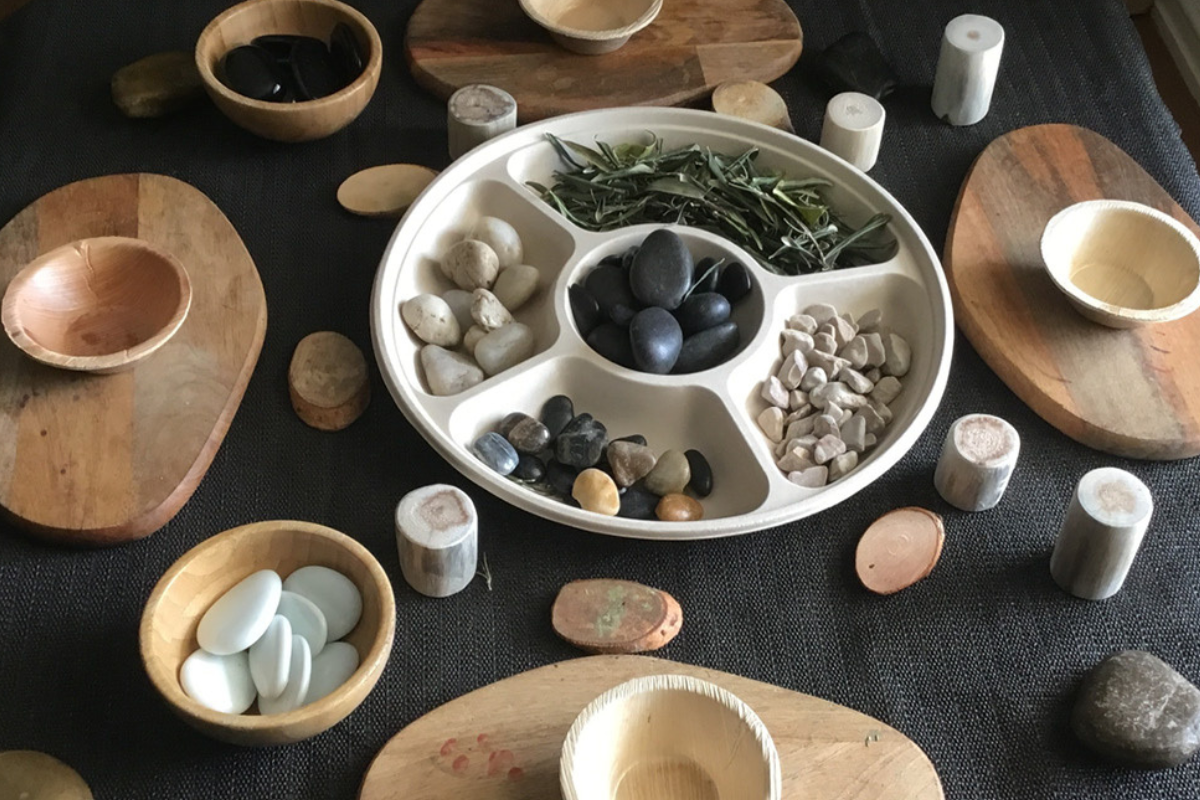
The Benefits of Loose Parts Play
In any environment, both the degree of inventiveness and creativity, and the possibility of discovery, are directly proportional to the number and kind of variables in it’ (Nicholson, 1972).
‘Loose parts’ is a term coined by architect Simon Nicholson in the 1970s. His theory is that children’s play environments should contain a wide variety of objects and materials. These objects and materials are not prescriptive – they can be almost anything! There are endless possibilities for play as children create in their own unique way.
The beauty of children’s imaginations is that they are vast. Where adults see a mess of mismatched containers, children see a castle just waiting to be constructed. How joyful it is to see a child pick up a spoon, pop a container on their head and instantly become a pirate!
What are Loose Parts?
Anything! The mind is the only limit to opportunity. Loose parts can be things found in nature such as sticks, leaves, rocks, water, or sand. They can be things found in the home such as kitchen utensils, cloths, buttons, buckets or pots. They can be scraps such as old timber, chairs, tyres or foam. And don’t forget random found objects that can be incorporated into children’s play.
How Loose Parts Promote Development and Learning
Loose parts play allows children to develop their creativity and imagination. It can benefit children in the following area of their development:
- Teamwork and cooperation. Children must communicate and work together if they want to build large or complicated structures.
- Socialisation. The open-ended nature of loose parts allows more children to be involved in the play scenario. More confident children can take a leading role. Less confident children can watch on and join in as they feel comfortable to do so.
- Intrinsic motivation and reward. Children are able to create and solve problems on their own without competition or fear of failure.
Sustainability in Loose Parts Play
Loose parts play is inexpensive and sustainable. Everyday household objects can be reused for play and be saved from landfill. Items found in nature can be used as loose parts. Most things that would generally be thrown in a recycling bin are fantastic to use. Random objects found by children themselves can spark imagination. Using natural and recycled materials has a positive impact on the environment. By reusing materials, the practice of sustainability also becomes embedded in children.
Loose Parts Ideas for Home
If you take a step back and watch your children playing, it is likely you will find them engaging in loose parts play. If you want to encourage more loose parts play, here are some suggestions.
- Set up a “Loose Parts Box”, where you can pop random bits and pieces to start a collection. Let your children add to the box and explore the contents of the box.
- Set up familiar objects in random places. For example add jugs and funnels to sand or water play.
- Allow time for your children to explore and tinker with the parts. When their ideas fail, don’t be too quick to rush to the rescue. Allow them to problem-solve for themselves.
- Ask questions such as
- I wonder…?
- How could we learn more about…?
- What else could you try?
- How do you think that happens?
Loose Parts Play at Keiki Early Learning
At Keiki, we use loose parts as part of everyday experiences and play, to help children to develop problem solving skills, creativity and encourage sustainable practice. To find out more, contact us today.


